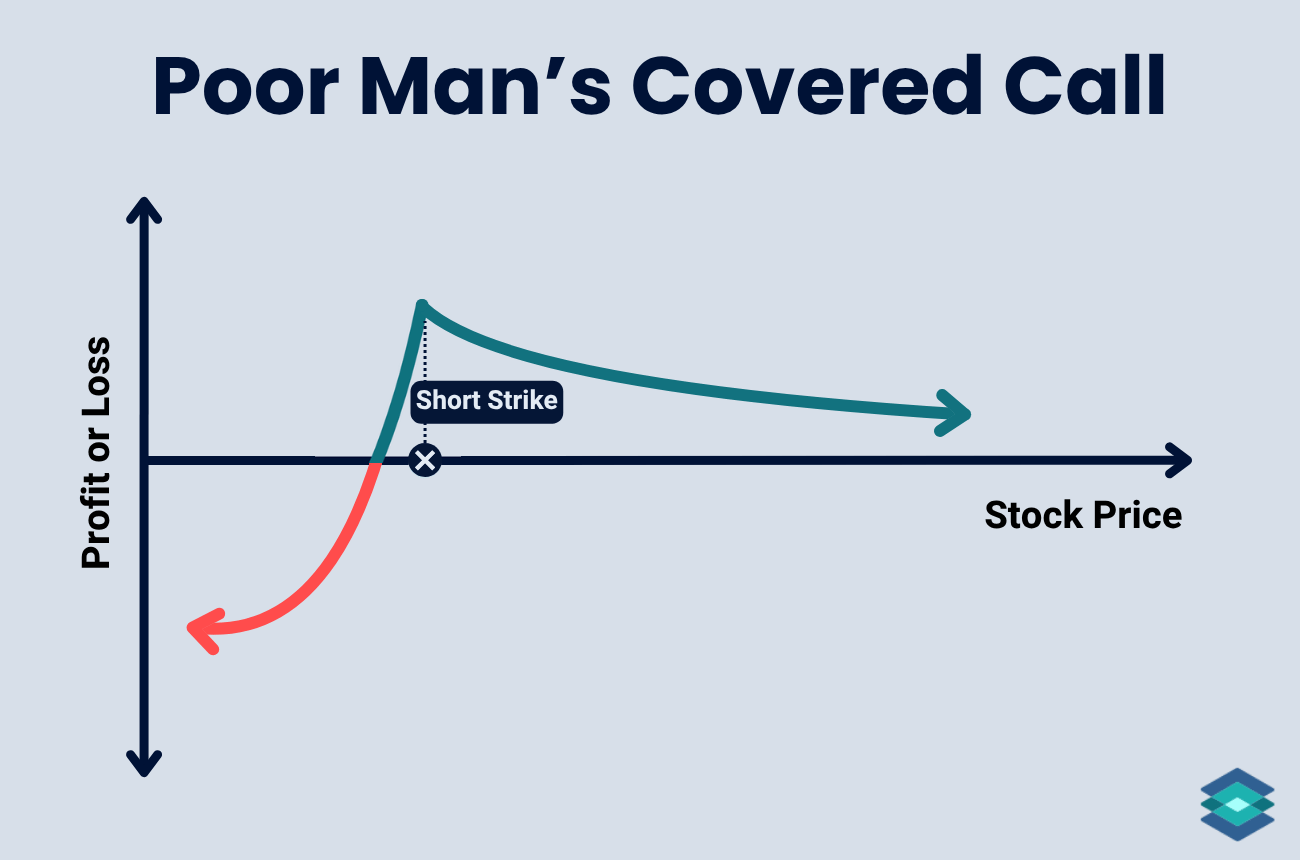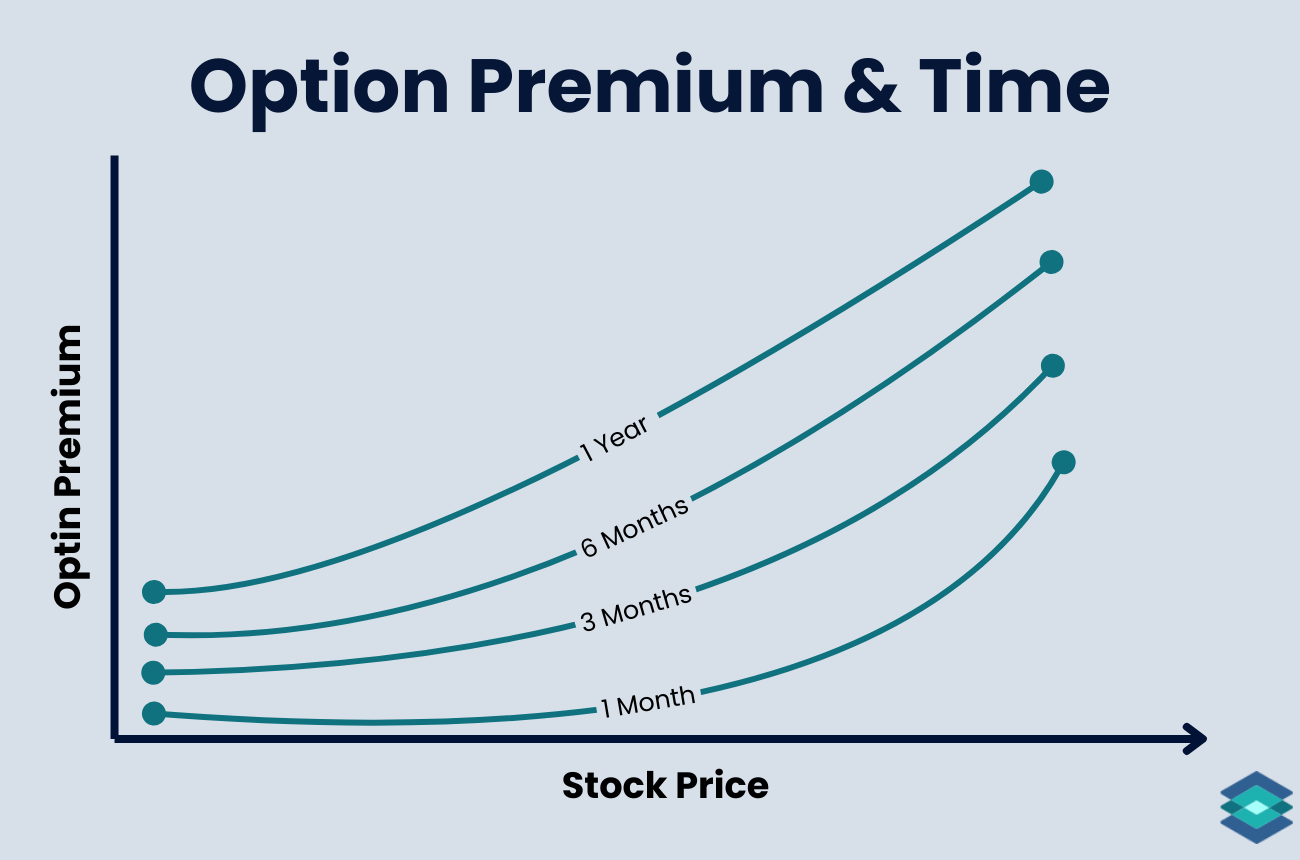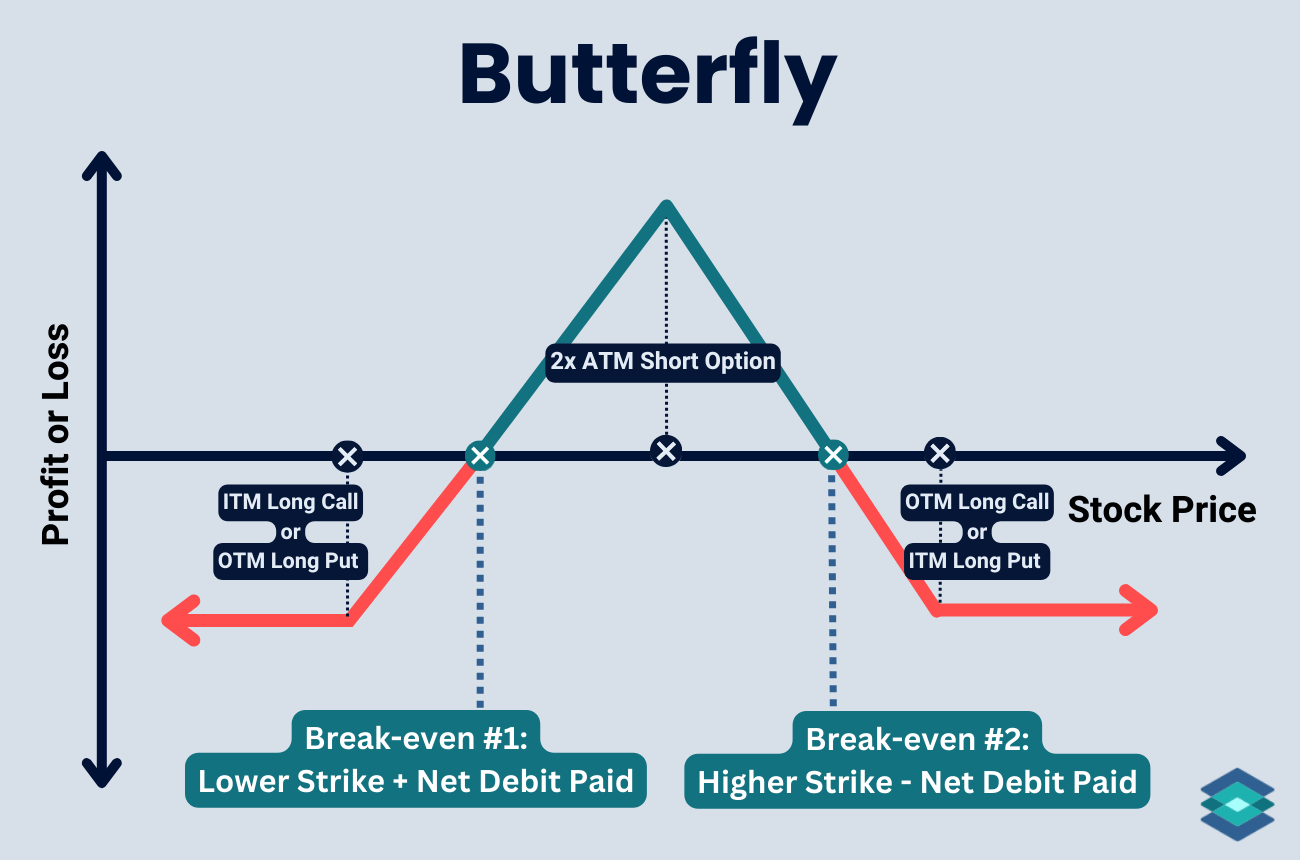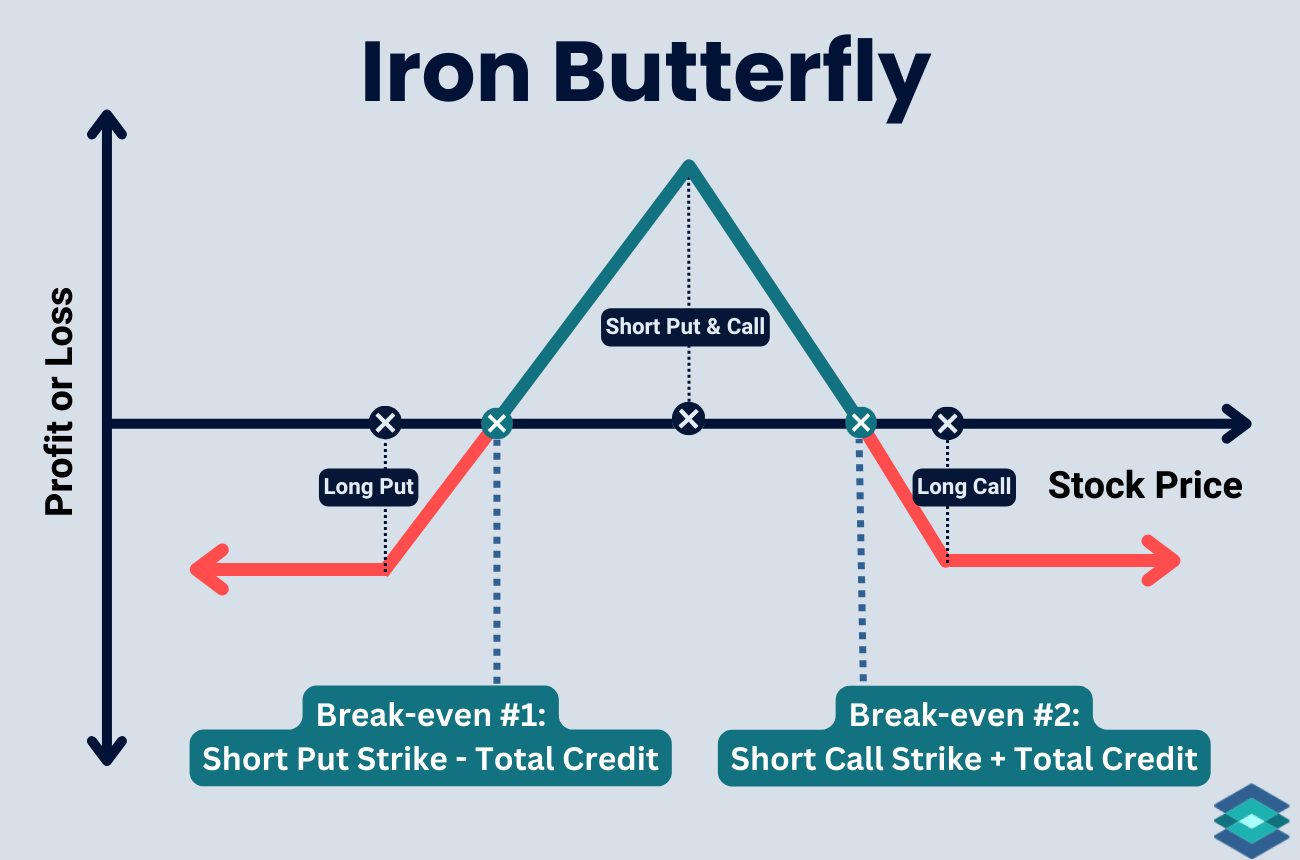Short Put Options Strategy: Beginner’s Guide
The short put is a high-risk, high-probability, market-neutral to bullish options strategy with substantial loss potential if the stock collapses.

The short put options strategy is a net credit trade best used in markets with elevated implied volatility (IV). Like a naked short call, short puts carry significant downside risk. In this article, we’ll walk you through everything you need to know about trading short puts.
Highlights
- Risk: Substantial downside risk (stock can fall to zero).
- Reward: Limited to the premium collected.
- Outlook: Bullish to neutral.
- Edge: Elevated implied volatility (IV).
- Assignment Risk: High when deep ITM and close to expiration.

2 Short Put Option Strategies
Traders sell naked put options for two reasons: to generate income (naked put) or to potentially buy stock at a lower price (cash-secured put). In both cases, the trader is either neutral or bullish on the underlying and expects it to stay above the strike price through expiration.

1. Cash Secured Put
This strategy is used by traders who want to get paid to wait for a stock to drop to a more attractive price. If the stock falls below the strike price, they’ll be assigned and required to buy the shares—which was the plan all along. They’ve set aside enough cash in their account to buy the stock, making it a “cash-secured” put.
For example, if XYZ is trading at $10 per share, a trader might sell the $9 strike put for $0.50. They set aside $900 in cash to buy the shares if assigned. If the stock stays above $9, they keep the premium. If it falls below $9, they’re assigned and buy the stock at an effective price of $8.50.
2. Selling Naked Puts for Income
When traders sell a put option with no intent or desire to buy the underlying stock if assigned, it’s called selling a naked put for income. It’s risky because traders usually don’t set aside enough cash to buy the shares. Instead, they just meet the minimum margin requirement, hoping the stock stays above the strike and the option expires worthless. Naked put sellers are more interested in selling high implied volatility (IV) as opposed to cash-secured put sellers, who focus more on value.
In this article, we’re going to look at a short put as a naked short put. We’ll discuss cash-secured puts more in detail in a different article.
📖 Short Call Strategy: Beginner Guide
Short Put Payoff Profile
Let's now walk through the various payoffs of the short put strategy.
Max Profit

When you sell a put, your maximum profit is the premium you collect. No matter how high the stock goes, you can never make more than the credit received.
Let’s say you sell the 85 strike put on XYZ for a credit of $1.00 ($100 total). The stock is trading at $90/share. Here’s the setup:
- Stock Price: $90
- Short Put Strike Price: $85
- Premium Collected: $1.00
- Max Profit: $100 (the premium)
If XYZ is above trading $85 on expiration, the option expires worthless, and you keep the full premium of $100.
Max Loss
.png)
The risk on a naked short put is substantial because the stock can theoretically fall to zero. Unlike the cash-secured version, you may not have the funds to buy the shares if assigned.
Max Loss = Strike – Stock Price at Expiration
Using the same example, let’s say XYZ falls to $60 by expiration:
- Stock Price: $90 → $60
- Strike Price: $85
- Premium Collected: $1.00
- Option Value at Expiration: $25
- Loss on the Trade: $2,500 – $100 = $2,400
That’s a steep loss, considering our max profit was only $100!
Breakeven

To find your breakeven, subtract the premium collected from the strike price:
Breakeven = Strike Price – Premium Collected
Using our example:
- Strike Price: $85
- Premium Collected: $1.00
- Breakeven: $84.00
If XYZ closes at $84.00 on expiration, you break even.
Trade Example: Short QQQ Put
In our real-world example, we will sell a 5% out of the money put option on QQQ (Invesco QQQ Trust), expiring in 44 days.
We chose this ETF because QQQ offers:
- Broad market exposure
- High liquidity (tight spreads, high volume and open interest)
- Numerous strike prices and expirations
Let’s go to the TradingBlock platform to find a put option that works for us on the QQQ options chain:
.png)
Why I Chose This 5% OTM Put
So, I chose the 5% out of the money put, which puts us at the $450 strike price. I like this option because:
- Fat premium — we collect $6.73, which is solid for a 44-day trade
- Decent theta — the daily time decay is $0.12, meaning the option loses value steadily
- Elevated implied volatility (IV) — currently around 26.65%, which inflates premium and gives us an edge as sellers
Here are our trade details:
- Position: Short 1 QQQ Put Option
- Premium Collected: $6.73 ($673 total)
- Expiration: 44 days
- Strike Price: $450
- Current Stock Price: $475.01
- Breakeven Price: $443.27
- Margin Requirement: $1,973 (more on this later)
We sold this 5% out-of-the-money put for $6.73, which means we’ll keep the full $673 if QQQ stays above $450 through expiration. Our breakeven is $443.27 — anything below that, and we begin taking losses.
This trade has limited reward and substantial downside risk. We’re getting paid to bet that QQQ won’t fall more than 5.4% in the next 44 days.
QQQ Trade: Positive Outcome
Let’s fast-forward 44 days to expiration. Markets were bearish, but QQQ stayed above our strike the entire time and never dropped below $450. The ETF closed at $460, safely above our strike.
How did our short put do? Let’s break it down:
- Expiration: 44 days → 0
- Strike Price: $450
- Stock Price: $475.01 → $460 📈
- Option Price: $6.73 → $0.00 📉
- Breakeven Price: $443.27 (unchange)

Since the option expired worthless, we keep the entire premium of $673.
QQQ Trade: Negative Outcome
Let’s fast-forward 44 days to expiration. The markets sold off hard. QQQ dropped well below our strike price of $450 in the last week. The ETF closed at $430—putting our short put deep in the money.
Here are the trade details:
- Expiration: 44 days → 0
- Strike Price: $450
- Stock Price: $475.01 → $430 📉
- Option Price: $6.73 → $16.83 📈
- Breakeven Price: $443.27 (unchanged)
.png)
On the last week of trading, QQQ made a significant move downward. We lost 10.10 ($1,010) on our trade here, far more significant than our max profit scenario.
This is a pretty dramatic move for a broad-based ETF like QQQ, but I’ve seen it happen before. Realistically, this kind of move is more typical for individual stocks around earnings season.
Also worth noting: this option would’ve likely been assigned before expiration. As time to expiration shrinks and an option sits deep in the money, the risk of early assignment rises—both are red flags.
Short Put Margin Requirements
The margin requirement for an uncovered put is based on the highest of the following two calculations, multiplied by the number of contracts and the standard multiplier (usually 100):
- 20% of the underlying asset price, minus the amount the option is out-of-the-money, plus the premium received
- 10% of the strike price, plus the premium received
Let’s go back to our earlier trade to see what the margin requirement may be to hold this position:
- Stock Price: $90
- Short Put Strike Price: $85
- Premium Collected: $1.00
- Max Profit: $100 (the premium)
Method 1:
20% of stock price = 0.20 × $90 = $18
Option is out-of-the-money by $5 ($90 – $85)
So:
$18 – $5 + $1 = $14 per share
$14 × 100 = $1,400 margin requirement
Method 2:
10% of strike price = 0.10 × $85 = $8.50 $8.50 + $1 = $9.50 per share
$9.50 × 100 = $950 margin requirement
Final Margin Requirement:

Since the broker uses the higher of the two, the margin required to hold this short put would be $1,400 per contract.
Strike and Expiration Selection
To choose the right strike price and expiration cycle for your short put, you’ve got to ask yourself two simple questions:
- How market neutral or bullish am I?
- How quickly do I think the move (or lack thereof) will play out?
If your outlook is more neutral than bullish, you may benefit from choosing a strike price that’s further out of the money. You’ll collect less premium but have a higher probability of success.
If you're leaning more bullish, choose a strike price closer to being at the money. You’ll take in more premium but also increase your option assignment chances.
As for expiration:
- A shorter duration means quicker time decay, but less room for error.
- A longer duration gives the trade more breathing room, but premium decays more slowly.
Short Put: Option Selection Example
Here’s an example of the put options I’d focus on and why when analyzing an options chain on the VanEck Semiconductor ETF (SMH). I will target put options that are approximately 5% out of the money (OTM):

Short Put: 3 Risks
Selling options naked comes with significant risks. Here are a few of the more important ones to bear in mind when you trade this options strategy:
1. Substantial Downside Risk
As we said, a short put’s max loss is brutal. Besides a rapid price drop, short put sellers also need to watch implied volatility (IV). Spiking IV, which tends to happen quickly, can push put option prices higher even if the underlying stays flat or edges up.
That’s why some traders place protective stop-limit orders on short put positions. Unlike regular stop orders, stop-limits trigger a limit order—not a market one. These usually lead to better fill prices, but they come with risks too—what if you don’t get filled in your range? Sometimes, a poor fill is a better than no fill in a fast market.
2. Margin Calls
If the market turns against you fast and you don’t have enough cash to meet a margin call, there’s a chance your account will get liquidated. In my experience, this tends to happen at the worst possible time—and with the worst possible fills. That’s why it might be wise to keep some extra cash on hand in your account to cover any potential future margin calls.
3. Assignment Risks
If your short put is in the money as expiration approaches, there’s a good chance it’ll be assigned early—meaning you’ll be forced to buy 100 shares of stock at the strike price. Early exercise usually happens when there’s little to no extrinsic value left in the option, so the long has no reason to keep holding it.
- The deeper in the money the option is, the more likely it is to be assigned.
- The closer it is to expiration, the greater the chance of assignment too.
Short Puts and Implied Volatility
Implied volatility (IV) plays a huge role in the success—or failure—of short puts. Higher IV inflates option premiums, meaning you collect more upfront when selling the put. That’s why experienced traders often look to sell puts when IV is elevated relative to its historical average.
The ideal environment for short puts is when IV is high and expected to fall. That way, not only do you collect a richer premium, but you also benefit from a drop in IV, which deflates the option's value—helping you close the trade early for a profit.
.png)
You may think selling options in a lower IV environment may mitigate risks, but this isn’t necessarily true. You collect less premium, and there's a bigger risk that IV will spike. If IV spikes, your short put increases in value—even if the stock goes nowhere. That can lead to losses or even margin calls.
Short Puts and Time Decay
Naked put sellers love time decay. It’s the reason this trade exists. In a constant environment—meaning price and implied volatility stay the same—the price of all options, calls and puts, goes down.
But time decay doesn’t happen linearly over an option’s life. With, say, a year until expiration, the option barely sheds value. Same story at six months. But at around 45 DTE, that’s when you really start to see time decay—or theta—eat away at the option’s price.
.png)
Short Puts and The Greeks
In options trading, the Greeks are a series of risk management tools that hint at the future price of an option based on changes in different variables. Here are the 5 most important Greeks to know:
- Delta – Measures how much the option price moves relative to the underlying stock.
- Gamma – Tracks how Delta changes as the stock moves.
- Theta – Measures time decay, showing how much value the option loses daily.
- Vega – Sensitivity to implied volatility, affecting option price.
- Rho – Measures impact of interest rate changes on the option price.
And here is the relationship between naked short puts and these Greeks:
Managing a Short Put
As I’ve said, trading options—especially naked ones—isn’t passive investing. You’ve got to stay on top of your position, constantly monitoring it to mitigate risk and maximize profit potential.
Closing a Short Put
When you sell a put option, you’re not obligated to hold it until expiration. In fact, most options traders exit their positions well before expiration. If your short put has lost significant value—say 90% of its initial premium—consider buying it back to close the position.
Doing this frees up your margin and completely eliminates the risk of early assignment. The last bit of premium is often the hardest to capture and carries the most risk relative to reward anyway.
Rolling a Short Put: Vertical Spread
Consider rolling the position if your short put is moving against you (i.e., the stock price is dropping). Rolling involves closing your current short put while simultaneously opening a new one with either a lower strike price, a later expiration date, or both.
Rolling down (to a lower strike) reduces your assignment risk by moving your strike further out of the money. This usually costs money, as you’re buying back an option with intrinsic value and selling one with less value. This trade is called a vertical spread.
Rolling a Short Put: Calendar Spread
When you roll your option to a later expiration, you’re giving yourself more time for the stock to move back up potentially. This typically brings in additional premium, which might offset or exceed the cost of closing your current position. This trade is called a calendar spread.
The ideal roll—down and out—gives you both a lower strike price and more time, potentially for a credit. This maintains your positive theta position while reducing immediate assignment risk.
Short Put Calculator
Explore our short put calculator below to see how your strategy will perform over time and under different market conditions.

⚠️Selling put options naked involves substantial risk if the underlying asset falls sharply. This strategy is not suitable for all investors and should only be used with a full understanding of the risks. Besides the initial credit received, commissions and fees are not included in above examples and may significantly impact trade outcomes. Read The Characteristics and Risks of Standardized Options before trading options.
FAQ
Let’s say ABC is trading at $100, and you're neutral to bullish, expecting it to stay above $98. You sell a 98 strike put expiring in 30 days for $2. If ABC stays above $98 at expiration, you keep the full $2 premium. If it falls below $98, you may be assigned and required to buy the stock at $98, regardless of its market price.
A long put is a bearish strategy where the trader pays a premium, hoping the stock falls below the strike price. A short put is a neutral to bullish strategy where the trader receives a premium upfront and profits if the stock stays the same or rises above the strike price.
Short puts benefit from time decay. As long as the stock price and implied volatility stay steady, the option loses value each day—allowing the seller to potentially buy it back cheaper or let it expire worthless.
The short put strategy is bullish to neutral. It profits when the stock stays above the strike price—either rising or remaining flat.
The most common way to exit a short put is by buying it back with a limit order before expiration. If you hold it through expiration and it closes in the money, you may be assigned and required to buy the stock at the strike price.
You make money on a short put by keeping the premium received if the stock stays above the strike price. The maximum profit occurs when the option expires worthless, allowing you to keep the entire premium.
The maximum loss on a short put is substantial and occurs if the stock falls to zero. It’s calculated as: Max Loss = Strike Price – Premium Received
For example, if you sell a put on ABC with a $90 strike and receive a $2 premium, your max loss is: $90 – $2 = $88 per share, or $8,800 per contract (since each contract covers 100 shares).
To sell a call option, you simply select 'sell' instead of buy on your trading platform. You collect the premium received in exchange for the obligation to sell the underlying asset if the option is exercised.
A long call option gives the buyer the right to purchase a stock at a set price before expiration, typically used when expecting the stock price to rise. A short call option involves selling a call, obligating the seller to sell the stock if exercised, often used to generate income but with unlimited risk if the stock price rises significantly.










